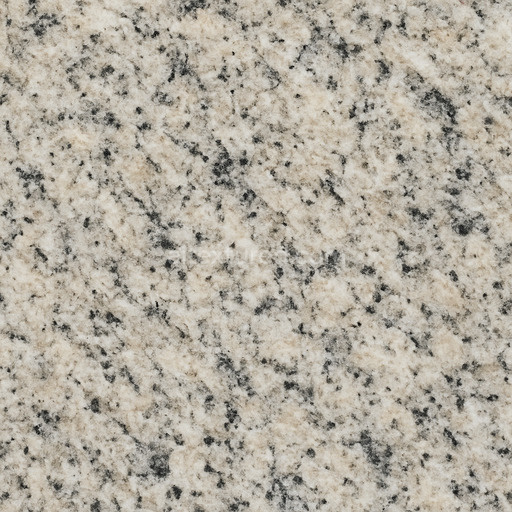Experience the natural granite texture seamless high resolution up to 8ktexture, an expertly crafted AI-generated stone texture that faithfully replicates the authentic complexity and visual richness of natural granite surfaces. This coarse-grained igneous rock is primarily composed of quartz, feldspar, and mica minerals, forming a durable base substrate characterized by tightly interlocking mineral grains. The unique mineral composition includes crystalline aggregates with varying grain orientations and subtle porosity shaped by natural weathering and geological processes. The surface finish of this seamless natural granite texture features a lightly polished slab appearance, showcasing intricate mineral patterns and delicate color variations that range from soft grays to warm beige tones. These hues are enriched by natural oxide layers that contribute depth and realism, enhancing the stone’s tactile and visual authenticity in any 3D preview or rendering environment.
In terms of physically based rendering (PBR) workflow, this tileable natural granite texture seamless high resolution up to 8k excels in delivering a production-ready material with comprehensive channel support. The BaseColor channel captures the nuanced pigments and mineral inclusions, faithfully representing the granite’s natural color spectrum. The Normal map emphasizes micro-roughness and crystal grain structure, bringing out the subtle surface irregularities inherent in granite’s crystalline composition. The Roughness channel balances polished and matte areas to simulate realistic light reflection without artificial glossiness, while the Metallic channel remains neutral to reflect granite’s non-metallic nature. Ambient Occlusion enhances shadows within crevices and grain boundaries, adding dimensional depth and visual complexity. Finally, the Height or Displacement map subtly conveys the stone’s uneven surface topology and natural fissures, enhancing three-dimensional realism in renders. This comprehensive texture setup ensures seamless integration with Blender, Unreal Engine, and Unity, supporting high-fidelity visuals at up to 8k resolution.
For optimal use of this ai texture natural granite texture seamless high resolution up to 8k, it is recommended to carefully adjust the UV scale to match the actual dimensions of granite slabs, preserving the natural grain size and maintaining authenticity. Additionally, fine-tuning the roughness parameter allows simulation of various surface finishes, from honed to lightly polished granite, making the material versatile across architectural visualization, game environments, product mockups, and interior staging. Combining this with subtle ambient occlusion and a gentle normal pass enhances surface breakup and micro-detail without introducing harsh highlights, ensuring a balanced and natural appearance that elevates any 3D preview or rendering project utilizing stone textures.
How to Use These Seamless PBR Textures in Blender
This guide shows how to connect a full PBR texture set to Principled BSDF in Blender (Cycles or Eevee). Works with any of our seamless textures free download, including PBR PNG materials for Blender / Unreal / Unity.
What’s inside the download
*_albedo.png — Base Color (sRGB)*_normal.png — Normal map (Non-Color)*_roughness.png — Roughness (Non-Color)*_metallic.png — Metallic (Non-Color)*_ao.png — Ambient Occlusion (Non-Color)*_height.png — Height / Displacement (Non-Color)*_ORM.png — Packed map (R=AO, G=Roughness, B=Metallic, Non-Color)

Quick start (Node Wrangler, 30 seconds)
- Enable the addon: Edit → Preferences → Add-ons → Node Wrangler.
- Create a material and select the Principled BSDF node.
- Press Ctrl + Shift + T and select the maps
albedo, normal, roughness, metallic (skip height and ORM for now) → Open.
The addon wires Base Color, Normal (with a Normal Map node), Roughness, and Metallic automatically.
- Add AO and Height using the “Manual wiring” steps below (5 and 6).
Manual wiring (full control)
- Create a material (Material Properties → New) and open the Shader Editor.
- Add an Image Texture node for each map. Set Color Space:
- Albedo → sRGB
- AO, Roughness, Metallic, Normal, Height, ORM → Non-Color
- Connect to Principled BSDF:
albedo → Base Colorroughness → Roughnessmetallic → Metallic (for wood this often stays near 0)normal → Normal Map node (Type: Tangent Space) → Normal of Principled.
If details look “inverted”, enable Invert Y on the Normal Map node.
- Ambient Occlusion (AO):
- Add a MixRGB (or Mix Color) node in mode Multiply.
- Input A =
albedo, Input B = ao, Factor = 1.0.
- Output of Mix → Base Color of Principled (replaces the direct albedo connection).
- Height / Displacement:
Cycles — true displacement
- Material Properties → Settings → Displacement: Displacement and Bump.
- Add a Displacement node: connect
height → Height, set Midlevel = 0.5, Scale = 0.02–0.08 (tune to taste).
- Output of Displacement → Material Output → Displacement.
- Add geometry density (e.g., Subdivision Surface) so displacement has polygons to work with.
Eevee (or lightweight Cycles) — bump only
- Add a Bump node:
height → Height.
- Set Strength = 0.2–0.5, Distance = 0.05–0.1, and connect Normal output to Principled’s Normal.
Using the packed ORM texture (optional)
Instead of separate AO/Roughness/Metallic maps you can use the single *_ORM.png:
- Add one Image Texture (Non-Color) → Separate RGB (or Separate Color).
- R (red) → AO (use it in the Multiply node with albedo as above).
- G (green) → Roughness of Principled.
- B (blue) → Metallic of Principled.
UVs & seamless tiling
- These textures are seamless. If your mesh has no UVs, go to UV Editing → Smart UV Project.
- For scale/repeat, add Texture Coordinate (UV) → Mapping and plug it into all texture nodes.
Increase Mapping → Scale (e.g., 2/2/2) to tile more densely.
Recommended starter values
- Normal Map Strength: 0.5–1.0
- Bump Strength: ~0.3
- Displacement Scale (Cycles): ~0.03
Common pitfalls
- Wrong Color Space (normals/roughness/etc. must be Non-Color).
- “Inverted” details → enable Invert Y on the Normal Map node.
- Over-strong relief → lower Displacement Scale or Bump Strength.
Example: Download Wood Textures and instantly apply parquet or rustic planks inside Blender for architectural visualization.
To add the downloaded texture, go to Add — Texture — Image Texture.

Add a node and click the Open button.

Select the required texture on your hard drive and connect Color to Base Color.


